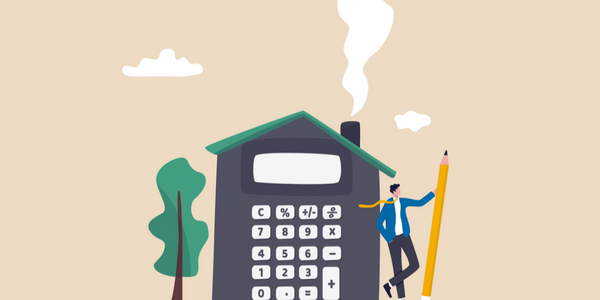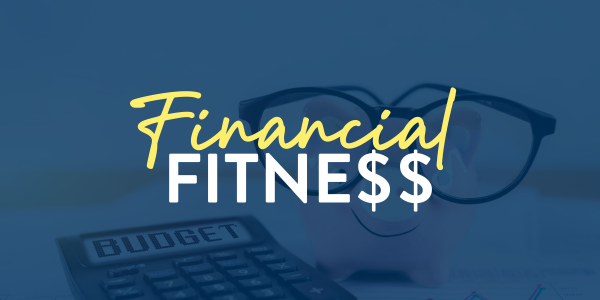
January 1 is coming up fast, and you know what that means: It’s time to set new year’s resolutions! For many people, the turning over of the calendar will involve financial new year’s resolutions.

Maybe you want to pay down your credit cards, start making retirement contributions (or start making larger retirement contributions), bulk up your savings account, start that rainy-day emergency fund, or buy some life insurance.
Whether your goals are short term or long term in nature, you’ll want a financial plan to keep you on track. And there’s no better time to evaluate your finances and establish a plan to help get you on that track than at the beginning of the new year.
Setting Good Financial Goals
So what are some good, solid financial goals (also known as financial new year’s resolutions) that you can set for 2023? We’re glad you asked! Your plan may depend on whether you own your own home, want to purchase a home, or want to purchase an investment or vacation home.
Whatever the case, taking a look at your personal finance plan can help you reach your goals more quickly. If you don’t yet have a plan, then that’s a perfect new year’s resolution right there!
Here are a few tips for setting financial goals that will leave you in a better financial position by next December.
Watch your credit report.
It’s imperative that you keep a regular eye on your credit report, ideally once a quarter. If you’re looking to purchase or refinance a home in the coming year, it may be a good idea to review your profile even more often than that. You can get a free credit report at www.freecreditreport.com, as well as through many credit card companies.
While we’re on the subject, a great financial new year’s resolution is to work on building credit. More on that below, but the biggest tip is devoting more of your monthly income to paying off your credit card debt.
You may think avoiding credit cards entirely is the way to go, as you can’t keep an outstanding credit card balance if you don’t own any credit cards. That’s a good idea in theory, but lenders do want to see that you can use credit and acquire debt responsibly.
With that in mind, a better option is obtaining a credit card or two with favorable interest rates, and then paying them off consistently at the end of every month.
Create, keep, and track a monthly budget.
Knowing where your money goes can help you to identify areas where improvements and savings can be made. This is even more important if you want to save money for a big purchase like a home.
Use one column in a spreadsheet to take stock of your monthly income, and then use a second one to record your monthly bills.
Then make a third column that includes everything else you spend on—going out to eat, shopping, groceries, and even gas. This is the column where you can really make some savings headway. Determine what you can reduce and what you can cut out completely.
Finally, create a fourth column where you calculate how much of that reduced spending can go toward your financial goals. Even a couple hundred dollars a month can make a big difference.
And remember, cutting out luxuries doesn’t have to be a long-term lifestyle. Just keep in mind that the financial new year’s resolutions you’re making this year can help you achieve the financial goals that can set you up for life. Those goals are well worth a little short-term pain.
Fast-track debt repayment.
Using the “snowball method” popularized by Dave Ramsey can help you pay debt off more quickly. This strategy involves paying the minimum balance on all your credit cards except for the one with the smallest balance—you pay as much as you can toward that one!
There are other variations of this method: Some people suggest instead choosing the card with the highest interest rate to pay off first.
Whichever method you choose, plan to pay as much money as possible toward the card you’re targeting. Once it’s paid off, move onto the next credit card. As you continue to pay off these credit card balances, the positive momentum “snowballs,” leaving you with a stronger credit score, improved credit report, and less debt!
Automate payments to stay on track.
Automating payments can be an effective strategy to crush your financial resolutions regardless of your financial goals. That’s thanks to the “set it and forget it” nature of this strategy. Whether you’re saving for retirement, paying off credit cards, buying a home, or something else, utilizing your bank’s automation services can get you there faster.
Simply set up automatic bill pay to ensure that you never miss a due date (or a payment). You can also schedule a funds transfer, where a set amount goes into your savings account every month or pay period. (It’s even better if the account is a high-yield savings account.)
One benefit of a higher interest rate environment is that rates are high across the board. This includes the interest rates for certificates of deposit (CDs) and savings accounts at certain banks. Some of these rates can be around 3% to 4%, making it well worth it to lock in a sum you can leave untouched in a CD or in a savings account that remains liquid.
Automate savings and investments to get ahead.
Another way to use automation to your advantage is to “set and forget” a savings or investment option.
Many people fail to take advantage of their employers’ workplace retirement plans, such as 401(k)s. These are worthwhile investments that are usually deducted from your pay pre-tax. You set it up so that a portion of your paycheck goes straight to the retirement account, and you’re never tempted to spend it. Your employer may also match some of the contribution, which means your account will grow even faster without any further effort on your part.
Another option is to set up an automatic savings plan on your own. To do this, you’ll first need a checking account linked to a high-yield savings account. Then you set up direct deposit from your employer so that a portion of your paycheck is automatically sent to the savings account, with the rest going to checking as usual.
Better Habits for 2023
Whatever your specific financial new year’s resolutions, if you can reduce debt, improve your credit, and increase your savings, you’ll be in a stronger position for your financial future. Don’t be afraid to make 2023 the year that you not only reach your goals, but also create long-term habits that can improve or maintain your financial health.
If these plans involve improving your credit, buying a home, refinancing your mortgage, or remodeling your house, we’re here to help. Give APM a call anytime to get started.








